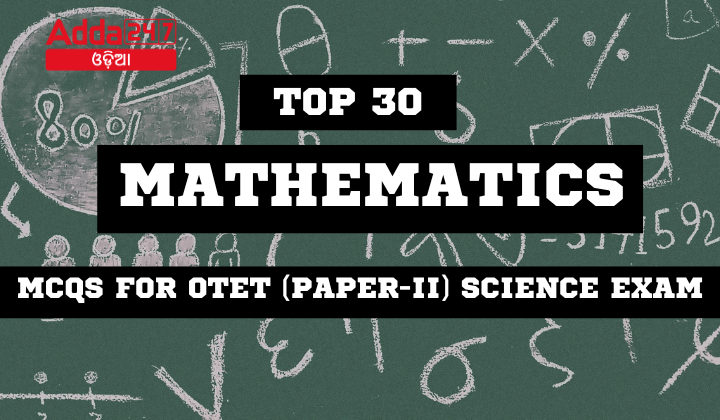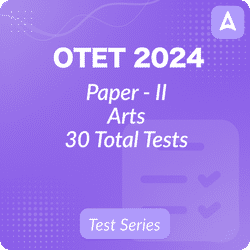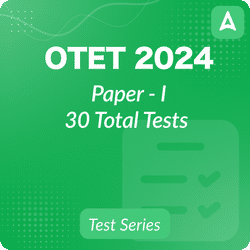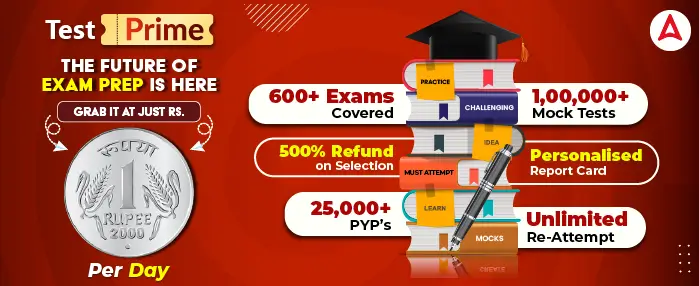Preparing for the Odisha Teacher Eligibility Test (OTET) Paper-I requires a strong grasp of mathematics concepts relevant to the secondary school curriculum. Here, we present a curated selection of 30 multiple-choice questions (MCQs) covering various topics in mathematics. These questions are designed to help you assess and reinforce your understanding in preparation for the exam.
Top 30 Mathematics MCQS For OTET(paper-II) Science Exam
1. What is the primary aim of teaching mathematics at the upper primary stage?
(a) To promote problem-solving skills
(b) To memorize formulas
(c) To teach complex calculations
(d) To focus solely on arithmetic
Ans: (a) To promote problem-solving skills
Explanation: At the upper primary stage, the aim is to develop problem-solving skills and a deeper understanding of mathematical concepts.
2. Which method of teaching mathematics involves deriving general principles from specific examples?
(a) Deduction
(b) Induction
(c) Analysis
(d) Synthesis
Ans: (b) Induction
Explanation: Induction involves deriving general principles from specific examples or observations.
3. What is the main objective of using activity-based learning in mathematics?
(a) To ensure memorization
(b) To encourage hands-on experience and engagement
(c) To focus solely on theoretical concepts
(d) To complete the syllabus quickly
Ans: (b) To encourage hands-on experience and engagement
Explanation: Activity-based learning emphasizes active participation and engagement, enhancing understanding through practical activities.
4. In the constructivist approach, what role does the teacher play in the learning process?
(a) Solely a transmitter of knowledge
(b) An observer who does not interfere
(c) A facilitator who guides and supports learning
(d) A judge who evaluates only
Ans: (c) A facilitator who guides and supports learning
Explanation: In the constructivist approach, the teacher facilitates and supports students’ active learning rather than just delivering content.
5. What is error analysis in the context of mathematics education?
(a) Analyzing students’ mistakes to understand their misconceptions
(b) Counting the number of mistakes made by students
(c) Evaluating students based on their test scores
(d) Ignoring mistakes to avoid discouragement
Ans: (a) Analyzing students’ mistakes to understand their misconceptions
Explanation: Error analysis involves examining students’ errors to understand underlying misconceptions and improve instruction.
6. Which of the following is a formal method of evaluating mathematics learning?
(a) Observations
(b) Interviews
(c) Standardized tests
(d) Discussions
Ans: (c) Standardized tests
Explanation: Formal evaluation methods include standardized tests that assess students’ understanding through structured assessments.
7. What is the main benefit of using a constructivist approach in teaching mathematics?
(a) It focuses on rote memorization
(b) It encourages passive learning
(c) It promotes active engagement and deeper understanding
(d) It simplifies complex problems for students
Ans: (c) It promotes active engagement and deeper understanding
Explanation: The constructivist approach emphasizes active engagement and the development of a deeper understanding of mathematical concepts.
8. What is the primary objective of remedial programs in mathematics?
(a) To advance students beyond the curriculum
(b) To address and correct specific learning difficulties
(c) To provide enrichment activities
(d) To focus on competitive exams
Ans: (b) To address and correct specific learning difficulties
Explanation: Remedial programs aim to address and rectify specific learning difficulties that students may encounter.
9. Which method involves breaking down a complex problem into simpler parts?
(a) Induction
(b) Deduction
(c) Analysis
(d) Synthesis
Ans: (c) Analysis
Explanation: Analysis involves breaking down a complex problem into simpler, more manageable parts to understand it better.
10. What is a key characteristic of a well-designed mathematics curriculum for upper primary students?
(a) It focuses solely on advanced topics
(b) It includes diverse and engaging activities
(c) It emphasizes memorization over understanding
(d) It avoids practical applications
Ans: (b) It includes diverse and engaging activities
Explanation: A well-designed curriculum incorporates diverse and engaging activities to facilitate comprehensive learning and understanding.
11. Which approach emphasizes learning through real-life experiences and hands-on activities?
(a) Constructivist
(b) Traditional
(c) Behavioral
(d) Theoretical
Ans: (a) Constructivist
Explanation: The constructivist approach emphasizes learning through real-life experiences and hands-on activities.
12. What is the sum of the squares of the first 10 natural numbers?
(a) 385
(b) 2535
(c) 3025
(d) 1550
Ans: (b) 2535
Explanation: The sum of the squares of the first nn natural numbers is given by n(n+1)(2n+1)6\frac{n(n+1)(2n+1)}{6}. For n=10n = 10, it is 10×11×216=385\frac{10 \times 11 \times 21}{6} = 385.
13. If the polynomial f(x)=3×2−5x+2f(x) = 3x^2 – 5x + 2, what is the value of f(2)f(2)?
(a) 4
(b) 0
(c) 6
(d) 8
Ans: (a) 4
Explanation: Substitute x=2x = 2 into the polynomial: f(2) = 3(2)^2 – 5(2) + 2 = 12 – 10 + 2 = 4.
14. What is the value of sqrt[3]?
(a)19
(b) 16
(c) 29
(d) 27
Ans: (a) 19
Explanation: sqrt[3].
15. The ratio of the areas of two similar triangles is 25:36. What is the ratio of their corresponding sides?
(a) 5:6
(b) 6:5
(c) 25:36
(d) 5:7
Ans: (a) 5:6
Explanation: The ratio of the sides of similar triangles is the square root of the ratio of their areas. \sqrt{\frac{25}{36}} = \frac{5}{6}=5/6
16. What is the principal amount if the simple interest on a sum at 5% per annum for 2 years is $100?
(a) $950
(b) $1000
(c) $1050
(d) $1100
Ans: (b) $1000
Explanation: Simple Interest SI = \frac{P *R *T}{100}. Rearranging for P:
P = \frac{SI *100}{R \T} = \frac{100 *100}/{5 *2} = 1000
17. If a=3 and b=4, find the value of a^2 + b^2 –
(a) 5
(b) 1
(c) 9
(d) 11
Ans: (b) 1
Explanation: Substitute a=3 and b=4
a^2 + b^2 – 2ab = 3^2 + 4^2 – 2 * 3 *4 = 9 + 16 – 24 .
18. Which of the following is an irrational number?
(a) 2√2
(b)
(c) 0.5
(d) 4
Ans: (a) 2√2
Explanation: 2√2 is irrational because it cannot be expressed as a fraction of two integers.
19. In a right triangle, if one angle is 30 degrees, what is the measure of the other non-right angle?
(a) 45 degrees
(b) 60 degrees
(c) 30 degrees
(d) 90 degrees
Ans: (b) 60 degrees
Explanation: The sum of angles in a triangle is 180 degrees. If one angle is 90 degrees (right angle) and another is 30 degrees, the remaining angle must be 180−90−30=60 degrees.
20.What is the LCM of frac{1}{2},\frac{2}{3}and frac{1}{5}?
(a) 1/30
(b) 1/10
(c) 1/6
(d) 1/15
Answer: (b) \frac{1}{10}
Explanation: To find the LCM of fractions with denominators 2, 3, and 5:
To find the LCM of the fractions \frac{1}{2}, frac{2}{3}, and \frac{1}{5}:
-
- Find the LCM of the denominators (2, 3, 5), which is 30.
- The LCM of the fractions is the reciprocal of this LCM, so 110\frac{1}{10}.
21. If x=2and y=3, what is the value of x^3 + y^3?
(a) 35
(b) 27
(c) 19
(d) 8
Ans: (a) 35
Explanation: Substitute x=2and : x^3 + y^3 = 2^3 + 3^3 = 8 + 27 = .
22. If a number is multiplied by 5 and then increased by 8, the result is 28. What is the number?
(a) 4
(b) 5
(c) 6
(d) 8
Ans: (a) 4
Explanation: Let the number be x. Then 5x+8=28.
Solving for x, 5x=20 so x=4
23. What is the area of a circle with radius is equal to side of the square whose area is 49 cm^2?
(a) 154 cm²
(b) 144 cm²
(c) 196 cm²
(d) 100 cm²
Ans: (a) 154 cm²
Explanation: Area of a circle = πr^2. Area of a Square=49cm^2
so side=√49=7 cm, so radius=7cm, Area of a circle= πr^2= π*7²=cm² (using π≈3.14\pi \approx 3.14).=154cm²
24. What is the value of (2x+3y) when x=4 and y=5?
(a) 23
(b) 25
(c) 28
(d) 30
Ans: (a) 23
Explanation: Substitute x=4 and : 2x+3y=2(4)+3(5)=8+15=23
25. What is the value of the expression 5^3 – (2^4 + 3^2)?
(a) 98
(b) 85
(c) 100
(d) 75
Ans: (c) 100
Explanation: Calculate each term: 5^3 = 125, 2^4 + 3^2 = 16 + 9 = 25. So, 125−25=100.
26. If the perimeter of a rectangle is 40 cm and the length is 12 cm, what is the width?
(a) 8 cm
(b) 10 cm
(c) 12 cm
(d) 14 cm
Ans: (b) 8 cm
Explanation: Perimeter of a rectangle = 2(length + width). So, 40=2(12+width)Solving, 20=12+width, width = 8 cm.
27. The difference between the squares of two consecutive integers is always:
(a) 1
(b) 2
(c) 3
(d) 4
Ans: (d) 4
Explanation: For consecutive integers n and n+1, the difference between their squares is (n+1)^2 – n^2 = 2n + 1, which is always 4 for n=2n = 2.
28. What is the area of a parallelogram with a base of 8 cm and height of 5 cm?
(a) 40 cm²
(b) 50 cm²
(c) 60 cm²
(d) 70 cm²
Ans: (a) 40 cm²
Explanation: Area of a parallelogram = base × height = 8 × 5 = 40 cm².
29. If \log_b 27 = 3, what is the value of b?
(a) 3
(b) 9
(c) 27
(d) 81
Ans: (a) 3
Explanation: From the equation \log_b 27 = 3, we have b^3 = 27 so b=27, b = \sqrt[3]{27}
30.. Find the value of (2x² – 3x + 1)/(x-1)when x=2.
(a) 5
(b) 4
(c) 6
(d) 3
Ans: (a) 5
Explanation: Substitute x=2: \frac{2(2)^2 – 3(2) + 1}{2 – 1} = \frac{8 – 6 + 1}{1} = (8−6+1)/1=5

